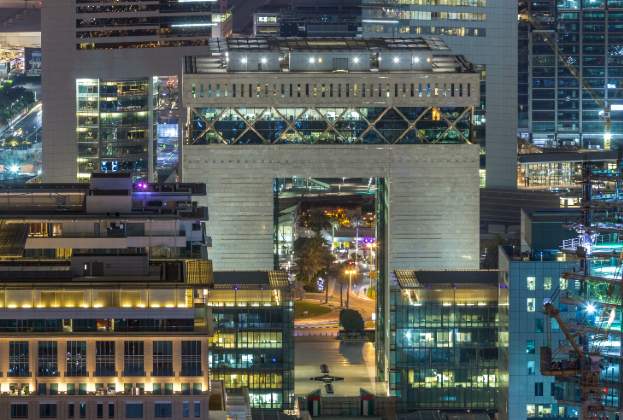Free zones, onshore, lease terms, company tax benefits, office sizes being dictated by the number of employee visas – there’s a lot to take in and consider for international companies looking to lease office space in the United Arab Emirates (UAE).
Based on seven years in the region, here are my pointers for occupiers looking to take space in the UAE.
Free zone vs onshore
An onshore company is licensed by the Department of Economic Development (DED) of the related Emirate and is allowed to do business in the local market as well as outside the UAE without any restrictions. Currently businesses who set up onshore require a local Emirati partner who owns 51 per cent of the shares of the business.
An alternative, which enables the company to retain 100 per cent ownership of their business, is taking space in one of the many free zones in the UAE where any company is allowed to do business. In Dubai there are a number of free zones with a preference for industry type. For example, banks and financial institutions typically lease offices in DIFC, media and creative companies will look to Dubai Media City/Internet City/D3, healthcare companies to Dubai Healthcare City (DHCC), bio-medical & pharmaceutical companies to Dubai Science Park while a significant number of general trading companies will be attracted to Jumeirah Lake Towers (JLT).
Office sizes and employee visas
The number of visas that a company is eligible for depends on the size of the selected office:
- Flexi desk – up to three visas
- Serviced office – four or five visas depending on the size of the office
- Physical space – one visa for every eight sq m
Lease terms
Typical lease terms start at 12 months for new startup businesses although three to five years (with negotiated break options) are more common for corporate company requirements.
In Dubai, lease terms between 10 and 99 years are deemed as a long-term lease and viewed upon as ownership and therefore a 4 per cent fee for the total value of the lease will be due. Hence it is very uncommon for leases to be more than 10 years.
Rents
In some cases, base rent and service charges are calculated as one figure, however it is more common for landlords to separate rent and service charges as individual amounts. Rents are generally quoted in Dirhams (AED) per square foot per annum in Dubai and per square meter per annum in Abu Dhabi. Rent is often fixed for the first two to three years of the lease term and then subject to fixed escalations until the end of the term.
These have traditionally been at 5 per cent per annum. However, during the lease term, landlords often reserve the right to revise the service charges in the event of a substantial increase in building operational costs. Landlords have become more generous in offering additional benefits to secure new tenants. The primary mechanism for this is rent free periods and it is not unusual for tenants to secure up to two months’ rent free per year of the lease in some locations.
These four points are of course only scratching the surface of the UAE leasing market, but are a first step for those looking to take out space in one of the hottest markets in the Middle East.
Further information
Contact Savills Worldwide Occupier Services
.jpg)


.jpg)

.jpg)


.jpg)

